Simplicity Coimbatore, Natural non modified foods- Heirloom tomatoes </a
Those of us who have spent the better part of 2020 taking restock of our lives would have opened up so many thought avenues related to daily living. Food is a crucial part of that thought process is it not ?
If you have been reading food posts or articles in recent times ,a few terms may be familiar. Some of those which I would like to draw attention to are ;”know your source” ; “grow your own” ; “heirloom” ; “non- GMO “ . All of these have one thing in common. That is, the idea of growing foods which have not been tampered with and which do not pollute the soil.
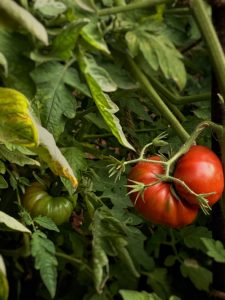
If we make an effort to ask a few questions about the origin of an ingredient, it is just a matter of time before the same thought process will initiate the grocer or supermarket owner to also understanding the importance of it. Our diet does not just depend on whether we ate fruits , vegetables and greens or not. It depends on where it was grown, how far it travelled to reach us and the manner in which it was cultivated. Last but certainly not the least is the variety. Is it a nattu (country) variety , hybrid or from foreign soil.
That brings us to the word ‘heirloom’. It is a specific word that has been borrowed from the West and used to best describe produce which has not been tampered with,genetically, for at least 50 years.
Let me elaborate a little before focusing on the ingredient for today. Many of us may not realise that carrots were never only orange. There are white, purple and yellow carrots too which look less plump but still delicious. The same thing with corn. Heirloom varieties of corn in South America come in all sorts of stunning hues.
“Why is it not easily available now?”, you may wonder. At some point during the World War when food became scarce, the logic was to grow food which was quick to cultivate and saved less time. The orange carrot was chosen for reasons like visual appeal,nutritional benefits and ease of adaptability. This is not to say that the other carrots weren’t nutritious but this one got picked. So we teach our kids that a carrot is to be coloured orange ! In the same way a tomato is round ,smooth cheeked and bright red.
It is time to step away from such stereotyping because it has cost us a tremendous loss in biodiversity. Mono cropping led to a rampant decline in all the factors which are necessary for a healthy farming set up.
With more urban farmers ,like me, entering into agriculture with an intent to eat the right foods and also ,most importantly, do good by the environment, a change is happening. Seed retrieval is being spoken about and the importance of it is catching on.
In farmer’s markets abroad, farmers from the area come with their trucks loaded with the freshest pickings. They may not look picture perfect but the gnarly, twisted,oddly shaped and differently coloured vegetables and fruits are being celebrated now ,more than ever before.
I still remember when a visiting friend told me how much she loved going to Indian vegetable shops because everything looked so natural. This was some years ago. Today it is shocking to hear that the waxed shiny fruit receives more attention than the multi-hued country cousin.

A few months ago, I was introduced to a variety called the Kasipatanam thakkali. When I looked at the images, it bore a strong resemblance to the heirloom tomatoes talked about abroad. We bought some from the organic store straight away .We ate it raw; grilled and also added it to a chutney. It tasted so good that I had so many questions ,in the mind,threatening to brim over.
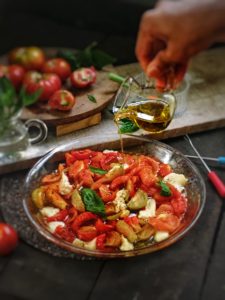
This variety has apparently existed in Andhra Pradesh since ages. The tomatoes grow in different shapes and sizes; round, oval, long etc. Another physical characteristic are the very attractive ridges which appear like pleats folding into the green stalk. When they ripen the colours also vary. The same plant will produce a yellowish tomato, a pink and an orange-red. In addition to the unripe green ones they are so beautiful to look at.
We saved the seeds and grew some for our home use and the plants have responded beautifully . The tomatoes in each plant are few in number and they fruit only once. After that the plant has to be removed. This is another reason why such plants aren’t suited to commercial farming. But the health benefits are immense.
Not only should we encourage such crops to be grown by farmers but we should also make the effort worth their while. An heirloom fruit is one that grows by an open pollination method. This means that it is naturally pollinated by the insects, birds and wind. Since these seeds have withstood time, the resistance to pest attacks is said to be greater. Open pollination has a direct positive impact on biodiversity.

This applies to only the native seeds to each country. By bringing in foreign seeds we are actually doing harm because it will not do good to our native wildlife .It will result in the entry of harmful foreign bacteria which will threaten all indigenous species. When people talk of growing California peanuts they do not understand the dangerous repercussions to soil and environment.
When native heirloom seeds are preserved and allowed for propagation they also come under the category of heirloom cultivars which have not been genetically modified or hybridised. The properties are left intact along with the colour, taste and smell. They have a shorter shelf life and will grow in limited quantities.
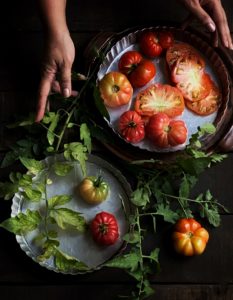
Heirloom tomatoes are known to be rich in Vitamin c and contain stress relieving antioxidants. Most importantly they are free of any kind of tampering and artificial mutations.
Truth be told, these kind of fruits and vegetables go back to a time when humans began to discover edible ingredients through foraging and gathering. Our nattu thakkali is probably a descendant of its original wild counterpart.
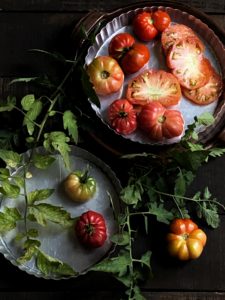
It really is time that we stepped out of the obsession of perfection in looks and choose that smaller lime or that wonky brinjal or even that light pink pomegranate. Chances are you are giving your body real food instead of something which is more of cosmetic value ! The need for food education is now.
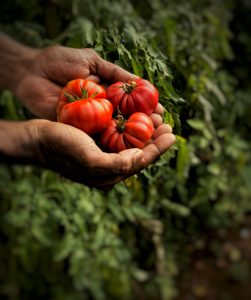

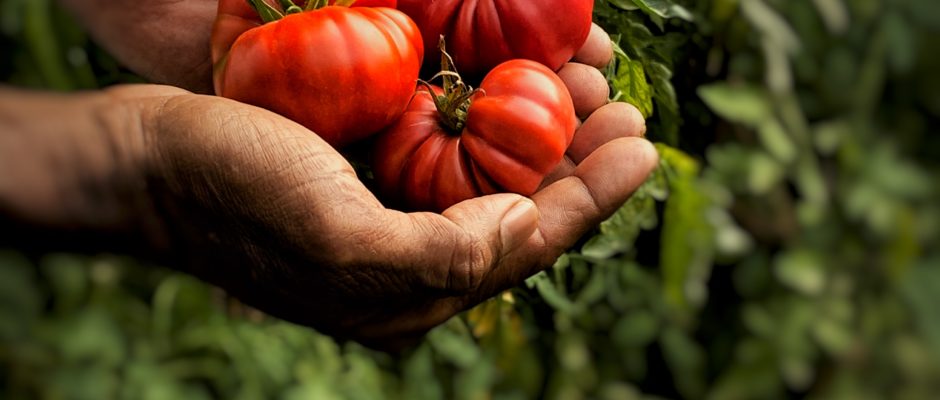
No comments yet.